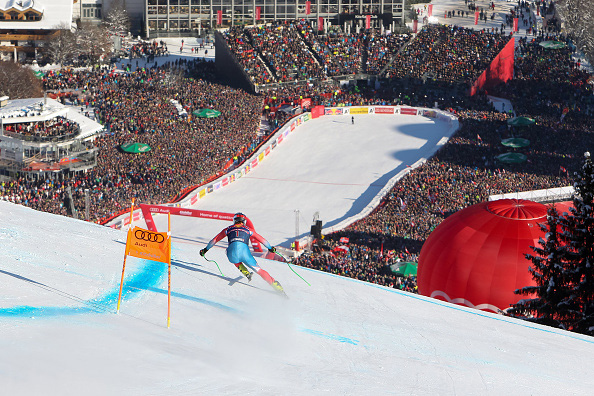
In the second edition of Origins, we will be looking at the long history of ski racing and how it came to be one of the biggest winter sports. If you haven’t already, check out the first edition of Origins that dives deep into the history of grooming snow.
- Related: Origins: Groomers
The act of skiing has been dated back thousands of years in Euroasian countries as a form of transportation and culture. More recently, skiing has transformed from a means of survival to a recreational activity. As a result, a variety of competitions were created to test the limits of what humans could do on snow.
There is a lot of debate as to where and when the first ski competitions were officially held. Many of the first competitions are believed to be have been held within militaries as training exercises. There is little evidence to trace back for these events. The best evidence for the first non-military ski races is from newspapers in Norway. As early as the 1840’s there are newspaper clippings that reference cross-country ski racing. The first national competition was also held in Norway in 1868, in what is now Oslo. A 43-year-old Sondre Norheim, a ski racing pioneer, and inventor won the competition out of a field of roughly 50. This race is widely considered the turning point towards modern ski racing.

Norheim created the first telemark skis that were able to hold turns and landings much better than previous designs. He beat a field that was almost all younger than himself and proved that his new designs were the future of skiing and competition.
Cross-country skiing holds the honor as the oldest ski competition, but there were many to follow in its footsteps. The first known slalom competition was held in 1922 in Müren, Switerzland, and was organized by Sir Arnold Lunn. The diversification of the sport was not done there.
It was not long after the first slalom event was hosted that the International Ski Federation (FIS) was established in 1924. The same year, skiing made its introduction to the Olympic stage in Chamonix. 1930 saw FIS recognize downhill racing. Shortly afterward in 1931, the first male world downhill and slalom championships were held. From there the first Olympic downhill event, the combined, was introduced. It was later removed from the Olympics in the 1940s.

It was not until 1950 until women’s events were added officially by FIS. In 1952, right after the inclusion of women to the world of competitive skiing, the first giant salmon event was completed at the Olympics in Norway. From there, the supergiant salmon was added to the Olympics at the 1988 Calgary games. The combined was re-introduced at the Calgary games as well. Unlucky for the event, the combined was again dropped from the Olympics in 1998 with the introduction of the combined salmon and the combined downhill. The combined salmon consisted of the slalom and giant slalom, and the downhill slalom consisted of the supergiant slalom and downhill.
Today, Alpine skiing has a variety of events in the Olympics including Downhill, Super-G, Slalom, Giant Slalom, Alpine Combined, and a Mixed Team Event. Cross Country Skiing also has a variety of different events with different distances between the women and men as well as sprints, relays, and combined events. The longer events range in distance from 10km-50km. There is also the biathlon which includes both shooting and cross-country skiing.
Ski racing has come a long way from its humble beginnings in Norway. With a variety of different and world-renowned athletes, it is the cornerstone of Winter Olympic Sports. Stay tuned for next weeks edition of Origins in which we dive deep into the beginnings of the Freeride World Tour.
Loving this history of skiing!
Thanx